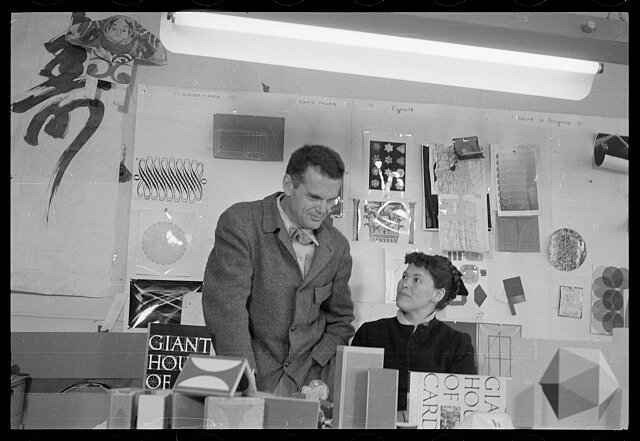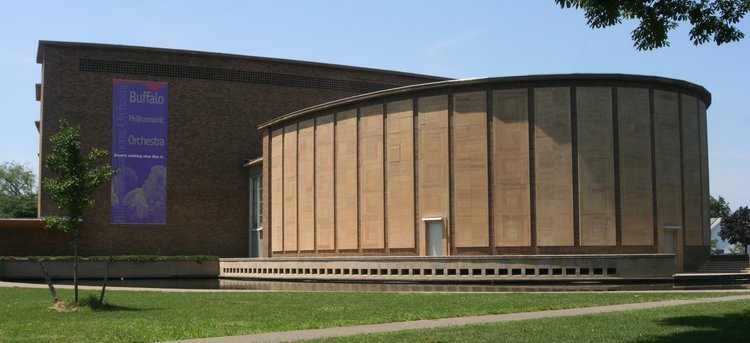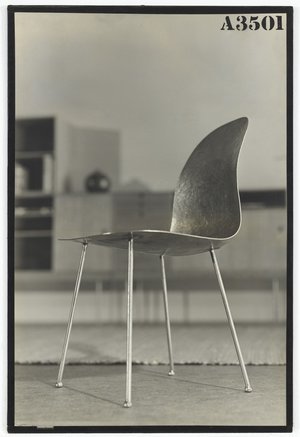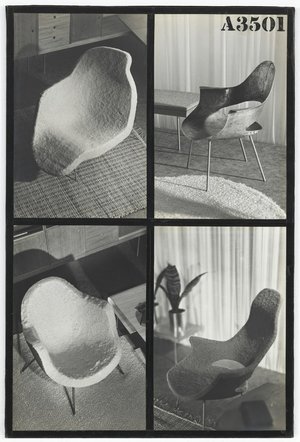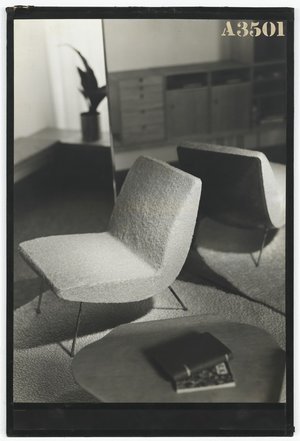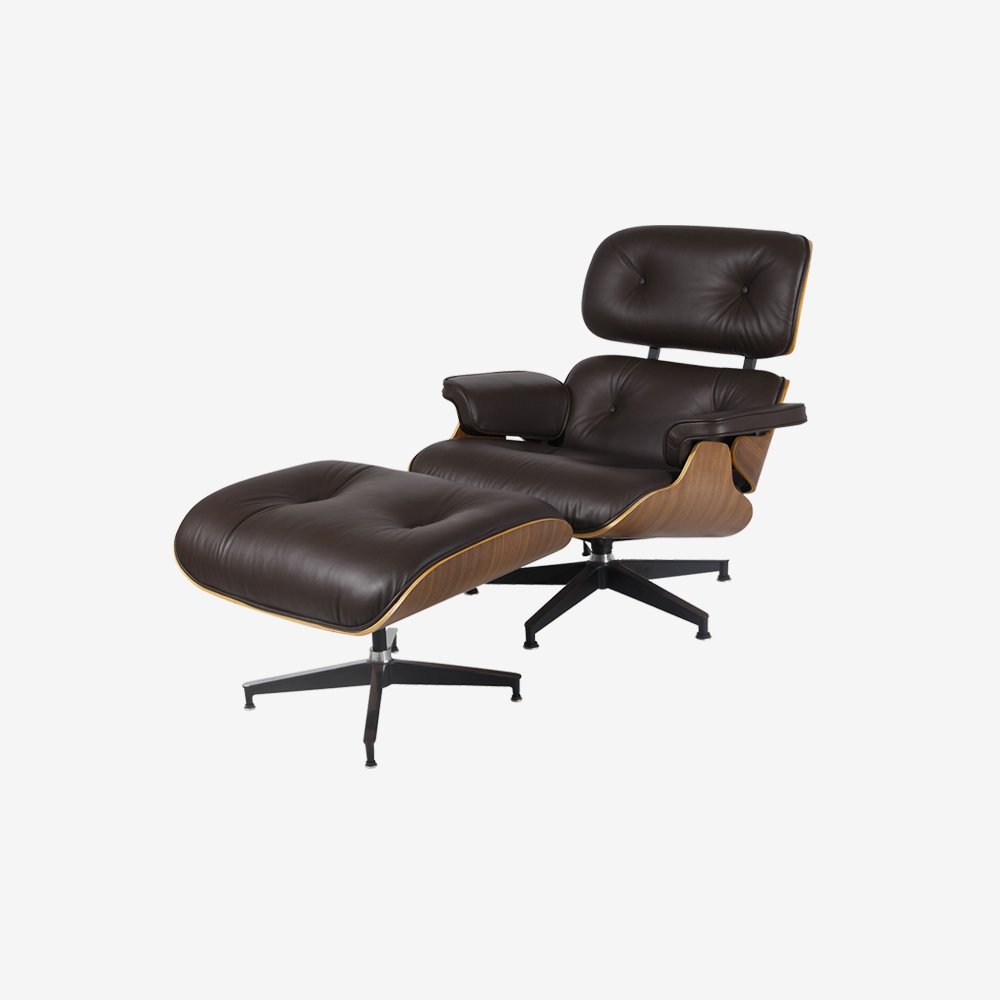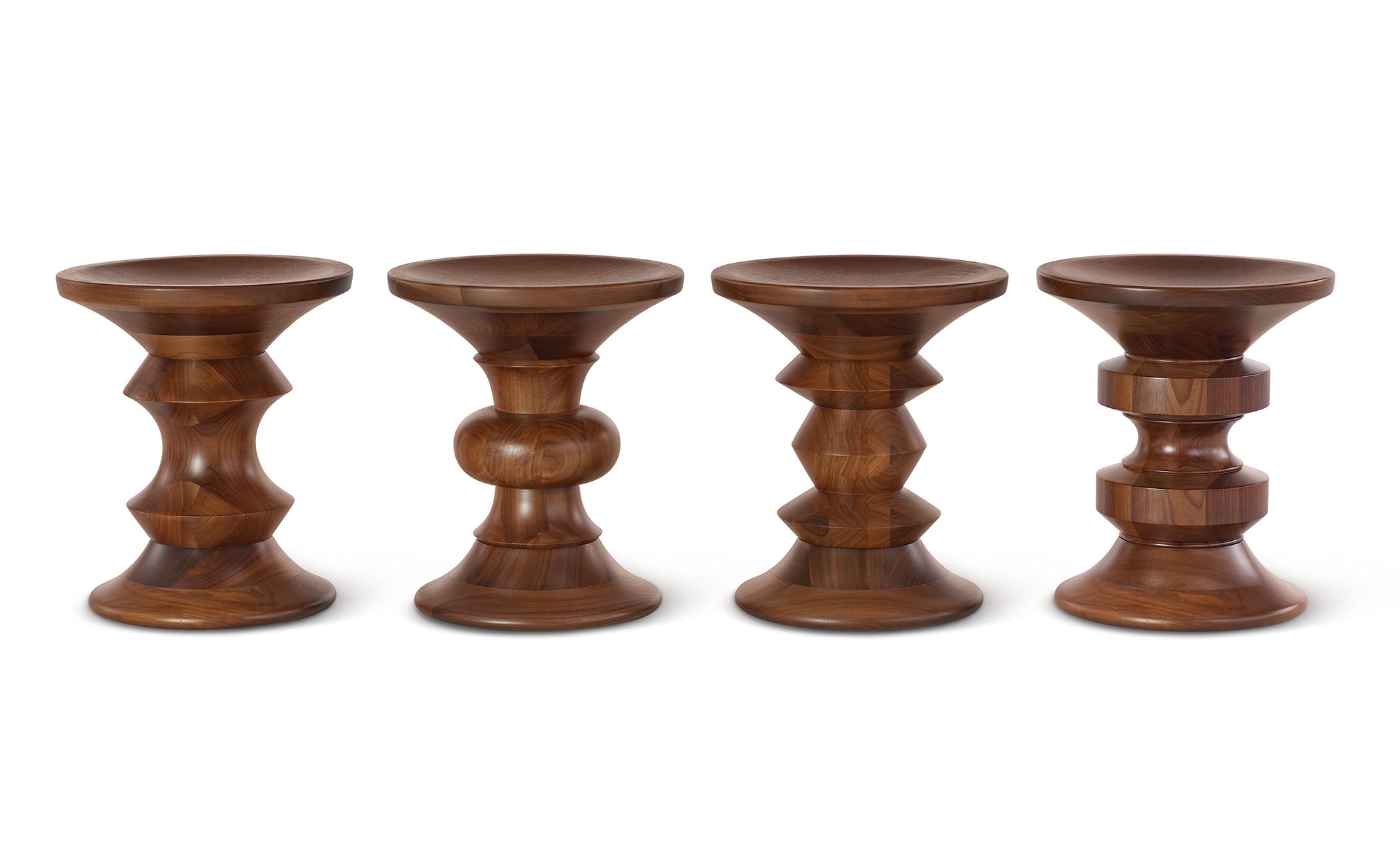Who is Charles Eames?
I remember the first time I ever saw the famous Eames Lounge chair. It reminded me of something my grandfather would have had. Something he would have curled up in at night to read the paper and have a drink. It was beautiful and filled me with the comfort of familiarity.
History of Charles Eames
Charles Eames is credited with making some of the most significant contributions to modern architecture and furniture design.
Charles studied briefly at Washington University in St. Louis before eventually opening up his architectural practice in St. Louis in 1930. By the end of the decade, he had moved to Michigan to further study architecture at Cranbook Academy of Art.
Charles Eames with his wife, Ray Eames. (source)
One of his biggest influences was a Finnish architect named Elie Saarien. Saarien designed the following buildings in the mid 20th Century:
I love that you can see some of the influence of these buildings on Charles Eames designs. The curve of the last one mimics the curve of the plywood chairs and the lines on some of the buildings remind me of his chair legs.
It was Elie's son, Eero, who partnered with Charles to design the award-winning furniture that was entered into the New York's Museum of Modern Art's "Organic Design in Home Furnishings" Competition in 1940.
Here is a sampling of the award wining pieces (all images are from MOMA's webpage here):
What was so revolutionary about what they did was their use of a new technique of curving plywood. (Doesn't it seem so obvious now?) I love what MOMA said in their 2013 exhibit about plywood titled "Plywood: Materials, Process and Form"
"Plywood,” explained Popular Science in 1948, “is a layercake of lumber and glue.” In the history of design, plywood is also an important modern material that has given 20th-century designers of everyday objects, furniture, and even architecture greater flexibility in shaping modern forms at an industrial scale. This installation features examples, drawn from MoMA’s collection, of modern designs that take advantage of the formal and aesthetic possibilities offered by plywood, from around 1930 through the 1950s. Archival photographs illuminate the process of design and manufacture in plywood. Iconic furniture by Alvar Aalto, Charles and Ray Eames, Eero Saarinen, and Arne Jacobsen appear alongside organic platters by Tapio Wirkkala (1951), Sori Yanagi’s Butterfly Stool (1956), an architectural model for a prefabricated house by Marcel Breuer (1943), and experimental designs for plywood in the aeronautics industry.
Eames Iconic Furniture
There is so much more to explore about Charles Eames...like the Eames House or his amazing wife, Ray Eames....but those are posts for another day. Today, I wanted to explore some of his iconic work so you can start identifying pieces when you are scouting.
Eames Lounge Chair
Probably THE most recognizable piece of his furniture, the Eames Lounge Chair is as comfortable as it is classic. Charles Eames described his desire to create a chair with "the warm, rceptive look of a well-used first baseman's mitt."
Designed for Herman Miller, here is what the website says about the piece:
When the set was introduced in 1956, there was nothing like it, and there is still nothing to equal it. The Eameses’ modern take on a nineteenth century club chair has not only endured for more than 50 years, it has become one of the most significant furniture designs of the twentieth century—instantly recognizable and enduringly fresh.
Eames Molded Fiberglass Chair
These fiberglass chair were discontinued until manufacturing technology recently caught up. Designed for Herman Miller, here is what the website says about the piece:
Thanks to a new proprietary process of producing fiberglass, Herman Miller is once again able to produce the Eames original 1950 Molded Fiberglass Chair safely by means of a less volatile, monomer-free “dry bind” process. Like the Eameses’ original single shell chairs, our new fiberglass finish has the same covetable surface variation and tell-tale fiberglass striation that have attracted avid vintage collectors for decades.
Eames Walnut Stool
From Herman Miller:
Are they really stools? Places to sit? Are they tables? Plant stands? Accent pieces for homes, offices, lobbies? Yes. They’ve been called abstract chess pieces. Well, no. Made of solid walnut, these stools designed by Charles and Ray Eames can be used anywhere, alone or in groups, and are beautifully versatile.
Molded Plywood Chairs
From Herman Miller:
You can tell it’s Eames at a glance. Lounge chair, dining chair. Both with wood or chrome-plated steel legs. Molding thin sheets of lightweight veneer into gently curved shapes gives the durable material a soft, inviting appearance. The chairs work just about anywhere—from homes and offices to schools and public areas.
What is your favorite Eames piece? Do you have one already or have one on a wish list?


